Geese, Geese, and Swans
Key Traits
Douglas Adams as quickly as wrote: “If it seems like a duck, and quacks like a duck, we now have on the very least to consider the chance that we now have a small aquatic chook of the family Anatidae on our fingers.”
This was Adams’ twist on the well-known Duck Examine. This examine relies on the assumption that we’re accustomed to what geese look and sound like. It’s safe to say that the majority of us are.
Nevertheless people usually confuse completely different water-loving birds like coots and grebes for geese. These are most positively not geese and by no means members of the duck family. Not even shut. Grebes, coots, and loons each belong to their very personal households, none of which is intently related to Anatidae.
What key traits are shared by geese, geese and swans? For starters, these birds are largely aquatic, spending quite a lot of their time swimming in, or on the very least near, water. We incessantly seek the advice of with them as waterfowl. Nevertheless waterfowl is not a scientific phrase. Some people lump unrelated birds into this class—birds like these grebes, coots, and loons. Used that methodology, the phrase ‘waterfowl’ doesn’t correspond to any precise natural group of birds. The an identical issue is true for the phrase ‘raptor.’ Nevertheless we’ll go away that one for another weblog.
Anatids—that is, birds throughout the family Anatidae—have our our bodies which is perhaps each ovoid, which suggests egg-shaped, or fusiform, which suggests tapering at every ends, like a spindle.
The smallest anatid is the African Pygmy-Goose (Nettapus auritus). This little chook is lovable, however as well as beautiful. The male has a chestnut breast and flanks, black and iridescent inexperienced upperparts, and a white-and green-head. It’s solely about 12 inches or 30 centimeters prolonged. You’ll uncover African Pygmy-Geese floating spherical throughout the swamps and shallow lakes of sub-saharan Africa.
The smallest species in every North America and Europe is the Inexperienced-winged Teal (Anas crecca). At 14.5 inches or 37 centimeters, this duck isn’t quite a bit bigger than the pygmy-goose.
The colossus of the family Anatidae is the Trumpeter Swan (Cygnus buccinator). This elegant North American chook is about 4.8 toes or 1.47 meters prolonged. That measurement accommodates the chook’s large prolonged neck. The Trumpeter Swan could be heavy, for a chook anyway, weighing in at about 30 kilos or 13.6 kilograms. Not solely is that this beast the most important member of its family, it’s moreover one in all many heaviest flying birds on this planet.
Geese, geese, and swans have small heads relative to their our our bodies. And their necks are prolonged. The number of cervical vertebrae—the spinal column bones throughout the neck—varies all through the avian world and among the many many birds contained in the family Anatidae. Swans have 24 or 25 cervical vertebrae; geese have between 17 and 23; geese have fewer than 16.
What variety of neck vertebrae do you and I’ve? Nearly all mammals have the an identical number of cervical vertebrae: 7. So, take into account it or not, individuals have the an identical number of neck bones as whales, bats, and positive, even giraffes.
The beaks—the funds—of anatids are thought-about one in all their most recognizable choices. Significantly the funds of geese. Many members of this family have the standard flattened, type of spatula-shaped bill. Nevertheless there are moreover variations on this elementary model.
Most geese, geese, and swans use their funds to chow down on crops of 1 type or one different. In order that they’re often herbivorous. Nevertheless you acquired’t be shocked to take heed to that there is a trustworthy amount of dietary variation amongst species. Not all of them are herbivores. Just a few of those birds specialize in catching animal prey like fish. Others fall inside the additional omnivorous part of the spectrum, together with some small invertebrates to their plant-based diets.
The wings of anatids are comparatively fast and pointed. They allow for fast, sturdy flight. Geese and their relations need to flap almost regularly whereas in flight, since their fast wings don’t allow for lots gliding.
Some duck species that feed on the ground or in very shallow water can take off explosively from the water. Their extremely efficient pectoral muscle mass, which drive the wings, make this doable. Totally different species need to get a type of working start all through the water’s flooring sooner than they may get airborne.
Now I’m constructive you understand the expression “Like water off a duck’s once more.” These birds really do have remarkably watertight plumage. As aquatic birds, geese and completely different anatids wish to forestall water from soaking their insulating down feathers. On account of down loses its capability to take care of a chook warmth if it’s going to get moist. The outer contour feathers overlap to sort a type of shell to take care of water out, like a Gore-Tex rain jacket. Contour feathers have a fine-scale development that causes water to sort beads and easily roll off. This waterproofing is enhanced and maintained by oils from the chook’s uropygial or preen gland (see the bloghttps://www.scienceofbirds.com/weblog/ducks-geese-and-swans, Feathers: Variety and Carry out).
The plumages of birds on this group are most incessantly some combination of brown, gray, black, and white. Nevertheless there are quite a lot of species which is perhaps far more vibrant. That’s notably true for male geese. A variety of of in all probability essentially the most attention-demanding examples are the Harlequin Duck, the Picket Duck, and the Mandarin Duck. The latter two birds are shut relations, every belonging to the genus Aix. The male Mandarin Duck is definitely ornate! Its plumage is a fantastic patchwork of orange, blue, purple, black, white, cream, and inexperienced feathers.
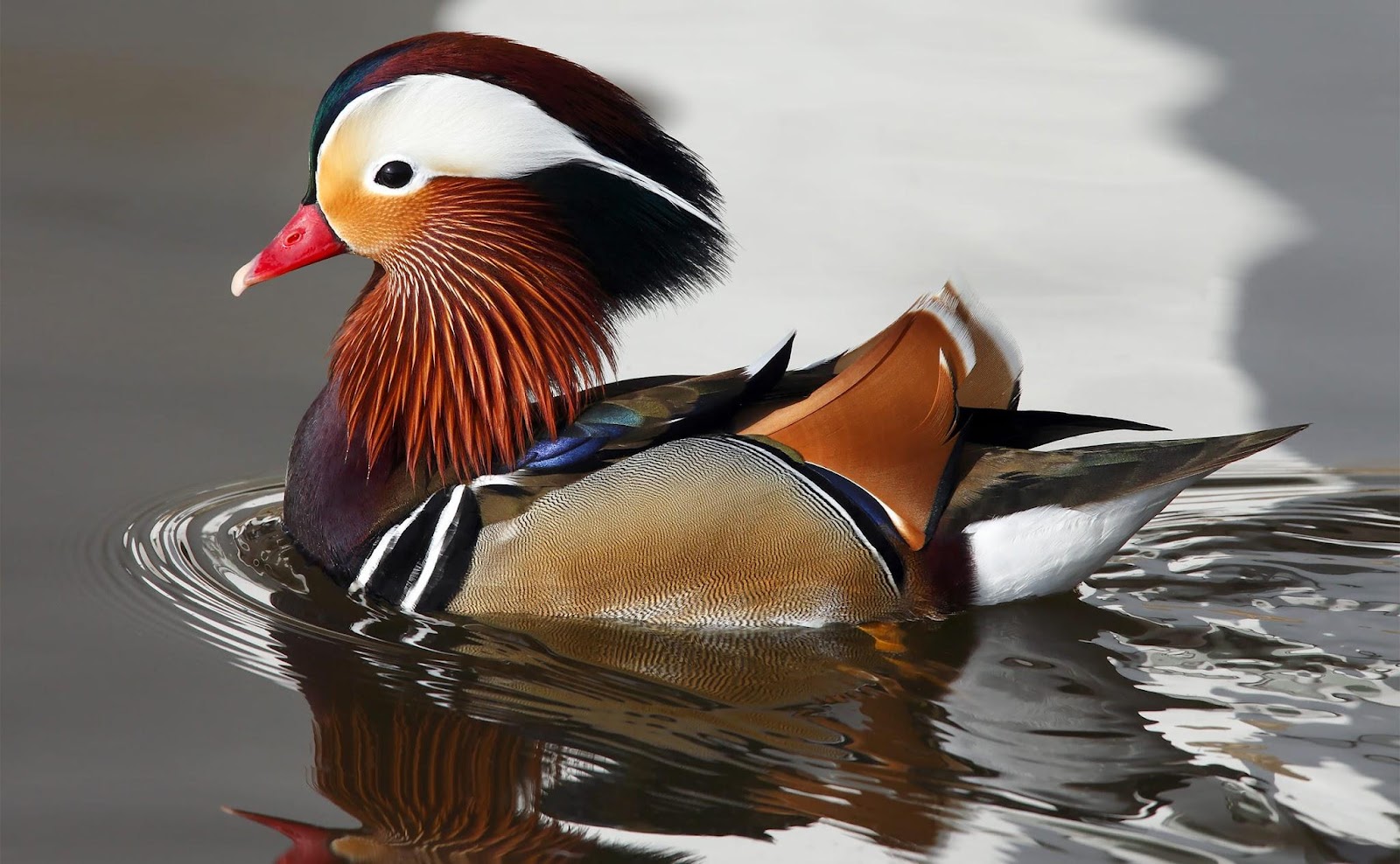
Birds, often, substitute their feathers a few occasions a 12 months. That’s the methodology of molting. The pliability to fly is so important to birds that the majority of them molt—or shed—just some wing or tail feathers at a time. That methodology, they maintain their capability to fly.
Nevertheless anatids shed their main wing feathers throughout the fall. Which suggests these birds are grounded, unable to take to the sky. This lasts for a few month, all through which the birds are weak to predators. So geese, geese, and swans are inclined to lie low in the meanwhile of 12 months. They keep out of sight until their new wing feathers develop in.
This trait isn’t distinctive to birds throughout the family Anatidae. One other water-dwelling birds like loons and grebes moreover molt their flight feathers .
What sounds do these birds make? Correctly, they positively aren’t songbirds, taxonomically or figuratively. They don’t sing, and few would describe their calls as “melodious.” As compared with songbirds, most geese, geese, and swans don’t vocalize all that quite a bit. The sounds they do make are comparatively harsh, identical to the grunts, honks, quacks, and whistles. I don’t find out about you, nevertheless I nonetheless love listening to those sounds.
The well-known American explorers Lewis and Clark had one factor to say regarding the sounds of waterfowl. In his journal entry for November fifth, 1805, Captain William Clark wrote “…rain continues this morning, I slept nevertheless little or no ultimate evening time for the noise saved all through your entire of the evening time by the Swans, Geese, White and Grey Brant Geese, on a small Sand Island shut by. They’ve been immensely fairly a number of, and their noise horrid.”
Family, Vary
Family
A variety of major divisions have normal contained in the family Anatidae over its prolonged evolutionary historic previous. A variety of of these distinct genetic lineages are dealt with as subfamilies. Most species belong to thought-about one in all two subfamilies: Anatinae or Anserinae. Uncover the suffix for subfamily proper right here is “nae.”
The subfamily Anatinae accommodates most of the birds that you just simply and I title geese. The alternative major subfamily, Anserinae, accommodates most of what we title geese along with all of the swans.
In addition to, there are some geese that don’t match into the Anatinae or Anserinae subfamilies. Similar to the 8 species of whistling geese all belong to the genus Dendrocygna, or the 6 birds throughout the genus Oxyura, along with our acquainted Ruddy Duck. These birds, too, stand apart of their very personal group. And, if one thing, these Oxyura geese are further intently related to swans and geese than completely different geese. The aim proper right here is that the birds we title geese, geese, and swans do not match neatly into their very personal respective subfamilies.
As is often the case, the widespread names we use do not mirror the actual fact of nature. They don’t basically conform to the precise genetic, evolutionary relationships amongst birds.
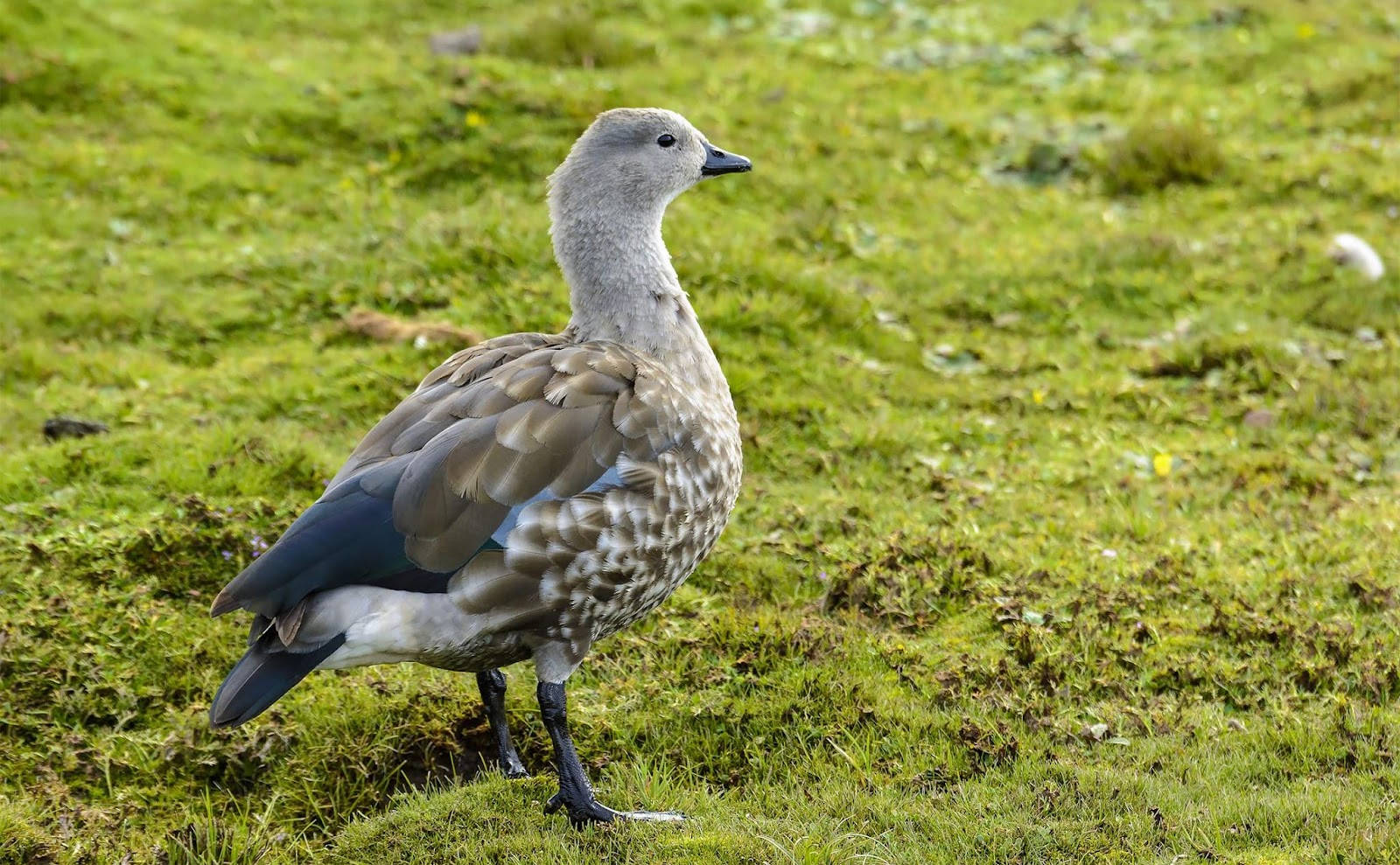
The problem with widespread names may deserve its private weblog, so I acquired’t get all riled up about it correct now, nevertheless I’ll offer you an occasion of what I’m talking about. The Blue-winged Goose is a chunky, grass-munching chook that lives in extreme elevation meadows in Ethiopia. To me, it’s facial options seems innocent and sweet—like a gosling that in no way grew up. You may almost certainly agree with me that this chook seems like a goose. Nevertheless its closest relative is certainly Hartlaub’s Duck, of western Africa. The entire Blue-winged Goose’s shut relations are known as geese. Genetically and as a consequence of this reality taxonomically, this chook sits squarely contained in the subfamily Anatinae. Recall that that’s the group that options quite a lot of the world’s so-called geese.
So what the heck is a duck and what’s a goose… like, really? Honestly, I can’t offer you a simple reply. There doesn’t appear to be one sharp dividing line between these birds on the genetic stage. Over tens of thousands and thousands of years, duck-like birds and goose-like birds have developed better than as quickly as, independently, contained in the Anatidae family. If I was renaming birds on this family, I would maybe try to simplify points and easily title all of them geese.
In apply, the birds we title geese are inclined to have the standard, flat “duck” bill. They’ve shorter necks, and they also usually current distinct plumage variations between the sexes. The birds we title geese have deeper funds further applicable for grazing than dabbling. Geese current few if any variations between ladies and men, and they also sometimes sort long-term bonds with their mates.
Now what about scoters, teals, scaups, hardheads, goldeneyes, eiders, smews, pochards, mergansers, wigeons, pintails, garganeys, shovelers, and so forth? These are merely numerous sorts of geese. Each of them has distinguishing bodily choices and behaviors. And each has its private charms.
The widespread names proper right here—teal, scaup, and so forth.—largely correspond to a lot of genera. So as an example, the 6 scoter species are all geese throughout the genus Melanitta.
Then we now have “dabbling geese” and “diving geese.” I’m constructive these phrases are acquainted to you. They describe feeding behaviors. In order that they’re helpful for determining geese throughout the topic. Within the occasion you see a duck disappear underwater for a few moments, then pop once more up like a cork, that narrows down the guidelines of doable species. it’s almost certainly one in all many diving geese.
Nevertheless the phrases “dabbling duck” and “diving duck” do not correspond very properly with any precise genetic lineages in geese. Some may argue with me on this degree, nevertheless I’ll merely go away it at that for now.
Dabbling geese identical to the Mallard and Northern Pintail are inclined to forage in shallow water. As they munch aquatic crops beneath the ground, their feathered duck butts tip as a lot because the sky. These dabblers rarely absolutely submerge themselves.
Diving geese, alternatively, swim spherical underwater as they hunt for crops or animal prey. They spend further time in deeper water. Examples from this group embody scaups, goldeneyes, the Widespread Pochard, and the Bufflehead.
Vary
With about 165 species of geese, geese, and swans, the family Anatidae is pretty numerous. Let’s focus on a bit about this group’s vary, distribution, and evolution.
As a bunch, these birds are cosmopolitan. We talked about that phrase throughout the weblog regarding the Peregrine Falcon. A cosmopolitan species or family lives nearly all world wide. Anatids are definitely widespread. You’ll uncover them all over the place in addition to throughout the coronary coronary heart of the Sahara Desert, the within of Greenland and Antarctica. I must degree out that very rarely Black-necked Swans current up on the northernmost tip of the Antarctic Peninsula. This species often breeds in southern South America. Nevertheless having a look at info in eBird, this species was reported in Antarctica solely as quickly as, in 1995. There have been two of them and they also every died. Sad, I do know.
I must let you realize about one different chook that died in Antarctica a few years earlier… actually about 67 million years earlier. In 1992, a fossil chook was found on the Antarctic Peninsula, on Vega Island. Paleontologists in the end gave it the genus establish of Vegavis.
Vegavis appears to have been a diving chook, and its closest residing relations are our geese and completely different anatid buddies. In case you’re questioning, Antarctica once more throughout the day wasn’t all frozen and barren. 67 million years prior to now, it was nonetheless part of the supercontinent Gondwana. It was lined in forests and crawling with dinosaurs.
The invention of Vegavis was enormously important throughout the topic of ornithology. It supplied the first fossil proof that some trendy chook lineages started to diversify tens of thousands and thousands of years sooner than the massive extinction that killed off the other dinosaurs.
Most of the chook orders and households everyone knows in the meanwhile trace their origins to the crazy situations after the asteroid hit Earth 66 million years prior to now. Nevertheless now everyone knows for constructive that some relations of geese have been waddling spherical throughout the Cretaceous Interval, throughout the shadows of Tyrannosaurus and Triceratops.
One huge take-home message proper right here is that the geese and completely different birds we’re talking about in the meanwhile characterize an historic chook lineage. Birds like these have been spherical an prolonged, very very long time.
From their southern origins in Gondwana, anatids unfold northward throughout the ultimate 25 to 30 million years, making their methodology all through the planet. In the meanwhile, these birds occupy all types of freshwater and marine habitats. You’ll uncover them grazing on the tundra, in alpine meadows, and on golf packages. You’ll see them paddling spherical in swamps, estuaries, lakes, ponds, billabongs, bays, rivers, and generally in your native sewage treatment plant.
Funds, Meals routine, Foraging
Picture the standard duck’s bill with its flattened type. Within the occasion you’re imagining a Mallard, I’m correct there with you. It’s a splendid occasion. Maybe you recall that the scientific establish of this species is Anas platyrhynchos. Platyrhynchos interprets as “flat bill” or “flat snout.”
What’s the advantage of this bill type? How does it work? The elemental mechanism works like this: a duck sticks its head into water or some pungent mud to feed on small crops, seeds, or invertebrates. It opens and closes its bill shortly, nevertheless not very extensively. Water or mud and any meals objects enter the bill near the tip. This supplies will get sucked into the mouth after which exits out the sides, nearer to the bill’s base.
Lining the inside edges of the upper and reduce bill are dozens of small, blade-like constructions known as lamellae. These lamellae are packed shut collectively. As water leaves the bill, meals objects get trapped throughout the lamellae. That is rather like how baleen works throughout the mouths of whales.
So a duck’s bill is a filter feeding gear. These birds stress their meals from water or mud. As a generalist omnivore, the Mallard eats many points, not merely tiny, filterable tidbits. It might moreover eat big insect larvae, worms, snails, crayfish, leaves, roots, rice, wheat, corn, and so forth. And a Mallard will happily scarf down completely something a human will toss at it: bread, watermelon, tater tots, regardless of.
One different attention-grabbing operate of duck funds and folks of geese and swans is that they’ve a mushy, rubbery outer layer. This outer sheath of keratin, known as the rhamphotheca, is hard and enticing in most completely different birds.
Anatids all have a small, laborious projection on the tip of their greater bill. We title this the nail. It capabilities type of like a claw or fingernail, allowing the chook to further merely seize stuff.
Beneath the nail, there are rows of tiny nerve receptors known as contact papillae. Collectively, these papillae sort the bill tip organ. This delicate organ permits geese and completely different anatids to actually really feel spherical throughout the mud or in murky water to look out goodies with their sense of contact alone.
Amongst duck species, there are quite a lot of variations on the same old issue duck bill, some further dramatic than others. All of it’s decided by what a species eats.
I’ll highlight a few examples. First, we now have the 5 species of mergansers. These geese have prolonged, skinny funds with serrated edges. It’s a major departure from the standard duck bill type. Mergansers eat largely small fish. These serrations on their funds help them keep on to their slippery, thrashing prey.
Then there are the scoters. These are geese that spend a great deal of time in coastal marine waters. They specialize in one different sort of animal prey: mollusks and completely different marine invertebrates. These geese dive beneath the waves to scoop up clams and rip mussels off of rocks. Their funds are thick and highly effective. Nevertheless they don’t crush the shells of their prey with their funds. They solely swallow them full.
The 4 species of Steamer-Geese are South America’s reply to the scoters. Steamer-Geese are chonky coastal birds that scoop up marine invertebrates with their thick funds. Curiously, three of the 4 species are flightless.
The ultimate occasion of a not-so-average-duck is the Pink-eared Duck of Australia. This chook is an oddball—every in one of the simplest ways it seems and throughout the sense that ornithologists haven’t pretty discovered the way in which it’s related to completely different members of the Anatidae family. The Pink-eared Duck has an prolonged, flat bill. Near the tip of the upper jaw, a rubbery flap of pores and pores and skin dangles conspicuously from all sides. These birds are primarily filter feeders that eat microscopic algae and completely different tiny points throughout the water. Ornithologists don’t know for constructive what these flaps do, nevertheless virtually undoubtedly they help the geese uncover meals with delicate contact receptors. I’ll embody {a photograph} of this weird, improbable chook throughout the current notes for this episode on the net website.
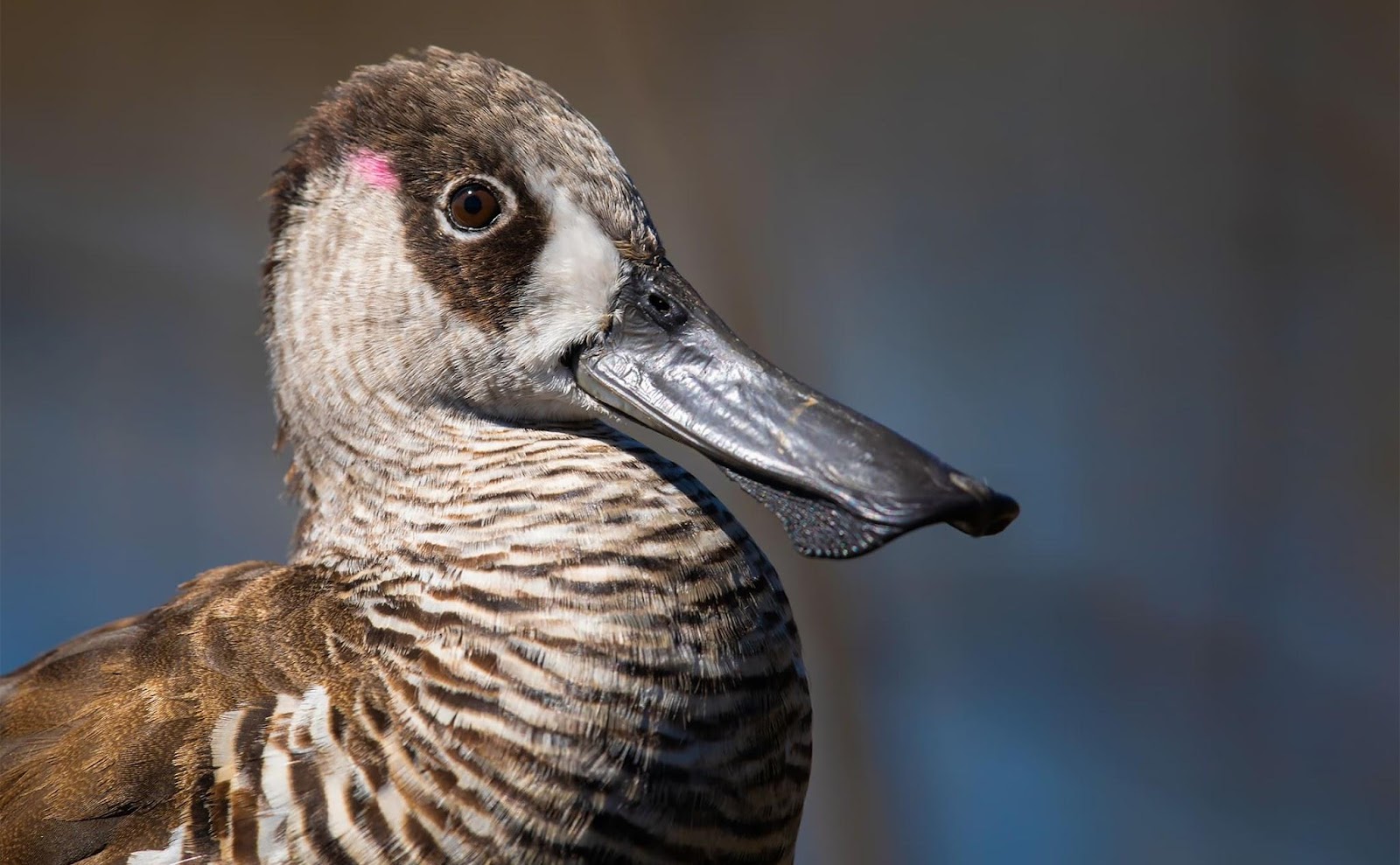
I additionally must level out one different filter-feeding duck: the Northern Shoveler. This chook is widespread all through the Northern Hemisphere. It has an unlimited schnoz… a really prolonged, enormous bill. The Shoveler makes use of its bill to stress tiny crustaceans from the water as a result of it motors alongside on the ground.
Okay, sooner than we switch on to talking about breeding in anatids, I must be sure that I don’t absolutely neglect our buddies, the geese and swans.
Geese and swans are primarily herbivores. Their funds are often deeper than these of geese—further arched, a lot much less compressed from prime to bottom.
Swans forage in a lot of strategies, along with dabbling on the ground and plucking aquatic crops underwater whereas upended. They take advantage of their prolonged necks to achieve down into the depths.
The a lot of unbiased lineages of birds we title ‘geese’ are almost all grazers. They generally tend to forage whereas strolling spherical on land. The Greylag Goose, as an example, eats grass, roots, leaves, grain, and many completely different plant meals.
Breeding
Yearly, geese, geese, and swans breed. To carry out this exercise, they sort monogamous breeding pairs. Nevertheless there’s some variation throughout the diploma of monogamy on this family. Swans are in all probability essentially the most loyal, usually mating for all occasions. Many geese do this, too. In these birds, every ladies and men help elevate the youthful.
In one other species, monogamous pairs stick collectively for just some years. And loads of geese are monogamous by way of a single breeding season solely, trying to find a model new companion yearly.
Sexual dimorphism is widespread amongst geese, nevertheless largely non-existent throughout the geese and swans. Sexual dimorphism is the place ladies and men have utterly completely different sorts, or morphs.
Throughout the breeding season, many male geese have brighter, further showy plumages than their female counterparts. Similar to the Mandarin Duck I mentioned earlier. Males can also have various ornaments, like prolonged tail feathers, vibrant patches of pores and pores and skin, and even weird growths on their funds.
As an illustration, males of the Knob-billed Duck and its shut relative the Comb Duck have a limiteless fleshy crest thingy rising from the best of their bill.
The extreme colors and wacky ornaments of male geese consequence from tens of thousands and thousands of years of females deciding on to mate with males which have such traits. That’s conventional sexual selection. We’ll positively do a whole weblog on sexual selection ultimately. It’s fascinating stuff.
So our fancy wanting male geese try to win the attention of females. Nevertheless they don’t merely float spherical on the water passively, wanting pretty.
Courtship is generally a further energetic affair. Males use courtship present behaviors to win the hearts of females. And females, too, current courtship behaviors.
Picket Geese, as an example, present fairly a number of courtship behaviors. Some are distinctive to the colorful male, others are utilized by solely the female. And some are utilized by every sexes. Listed beneath are the descriptive names for a number of of those behaviors in Picket Geese: Flip-the-back-of-the-head, chin-lift, present shake, rush, bill-jerk, and burp.
Throughout the Picket Duck and completely different species, utterly completely different behaviors are used counting on the stage of courtship. Some behaviors provoke the pair bond, others are used later to strengthen and maintain it.
Now, I’m about to talk about chook intercourse, briefly. That’s The Science of Birds, in any case, and we don’t want to attract again from this topic. It’s so important, biologically.
There are some really attention-grabbing points regarding the intercourse lives of birds throughout the Anatidae family. I’ll highlight only one now, since we don’t have time to enter all of it. Amongst the entire world’s birds, most males don’t have one thing that resembles a penis. They solely have a cloaca that seems pretty identical to that of the female. The cloaca is the one opening on the once more end of a chook the place wastes come out and the place copulation takes place.
Nevertheless about 3% of chook species do have a penis. It’s under no circumstances the an identical issue as a result of the organ current in mammals. It developed independently as an extension of the cloaca. Technically, it’s known as a cloacal phallus. Most of the world’s chook species which have this organ are geese and geese. Counting on the species, the male’s cloacal phallus is prone to be fast or it’s prone to be prolonged. Like, really prolonged.
The reality is, the Lake Duck (Oxyura vitatta) has the longest phallus relative to physique dimension of any chook. This shut relative of the Ruddy Duck lives in South America. The chook’s physique is about 23 inches or 59 centimeters prolonged. Its cloacal phallus is larger than half as long as its physique. The longest on file, that I do know of, is 16.7 inches, which is 42.5 centimeters.
If most birds don’t have or desire a phallus, why do many geese and geese have this development? And why are some so dang prolonged? One hypothesis equipped for a really very long time was that the phallus is an adaptation for mating throughout the water, which is what a lot of these birds do. That appears as if an affordable rationalization. Further simply recently, nonetheless, ornithologists have offer you some hypotheses which is perhaps rather more tough and, I really feel, further attention-grabbing. Nevertheless we’ll go away that topic for another day.
Okay, so our birds have mated, eggs have been laid, and it’s time to spice up a family. For species like swans and many geese, every dad and mother will take part in caring for the youngsters.
This isn’t the case for lots of geese. The rule of thumb seems to be that in species with sturdy sexual dimorphism, dad doesn’t stick spherical. These flashy, vibrant males may help the female assemble the nest or defend her and the eggs for a short time. Nevertheless these males usually drift off as quickly as incubation is properly beneath methodology. This makes some sense: since a male is large conspicuous, he may entice predators to the nest if he stayed close to his family. Females, alternatively, have cryptic plumages… they’re camouflaged as they sit of their nests.
This may make clear why even male Harlequin Geese don’t stick spherical to spice up their ducklings. You see, Harlequin Geese are irregular on account of they sort long-term pair bonds, not like most duck species the place the male has such showy plumage. The an identical monogamous pair of Harlequin Geese meets up 12 months after 12 months to mate. Males in long-term pairs in numerous species, like geese, usually stick spherical to spice up their infants. Maybe the extraordinarily conspicuous male Harlequin Duck would endanger his family if he caught spherical. Predators would see him a mile away. So he leaves his family behind, then reunites collectively along with his woman the following season.
Little one geese, geese, and swans often aren’t solely lovable, however as well as capable of feeding themselves not prolonged after busting out of their eggs. And to allow them to swim instantly, too. So these youthful birds are precocial. They’re born lined in fuzzy down with their eyes open. They’re capable of observe Mom all over the place.
Typically the youthful of a lot of households will acquire collectively in a single group. One or a few grownup birds will take care of the entire gang of infants. Sort of like day care. Ornithologists title this a crèche. The phenomenon of crèching conduct is seen all through the avian world, from flamingos and penguins to boobies and terns.
A pair years prior to now, a female Widespread Merganser made the headlines proper right here throughout the US when she was observed with a crèche of 76 ducklings in her care. 76! She was swimming spherical on a lake with an prolonged line of fuzzy ducklings in tow. Crèches often aren’t basically unusual on this species, nevertheless no person had ever seen a single female taking excellent care of so many youthful. Who’s conscious of what occurred to the other Merganser mothers? And good issue the ducklings could feed themselves, in another case there’s no methodology this will work.
After a month or two, youthful geese, geese, or swans will fledge. In a lot of duck species, dad and mother abandon their youthful not prolonged after fledging. The dad and mother of some greater species like geese and swans will keep on with their offspring by way of the youthful birds’ first migration and winter.
Within the occasion that they’re lucky, many species of untamed geese, geese, and swans can reside for over 30 years.
Migration
The ‘V’ formation of migrating geese, geese, and swans is an icon of nature internationally. This conduct helps the birds protect energy on their long-haul flights. Each chook flies barely better than the one in entrance of it. The movement of air over the wing of the chook in entrance reduces drag on the chook behind. The chook on the very entrance doesn’t get this revenue, in reality. So when the lead chook will get drained, it falls once more, and one different takes its place.
Migration is widespread on this family of birds. Many migratory species breed in temperate or polar latitudes, each north or south. The occasions are prolonged there and meals is plentiful. Nevertheless when winter comes, their watery habitats freeze over and/or meals turns into scarce. In order that they acquire in flocks and fly to hotter places. They uncover ice-free wetlands, lakes, or bays to spend the winter. It’s all through this time that males of many species deal with their vibrant breeding plumage and courtship begins.
Remember that these birds molt their main wing feathers , after the breeding season ends throughout the fall. They alter into flightless. Many male geese in the meanwhile placed on a short-term, drab, camouflage plumage. It’s known as eclipse plumage. This helps the flightless males cowl from predators as soon as they’re so weak.
Flightless birds clearly can’t migrate. What many species do correct after the breeding season is fly to a haven, a type of protected staging flooring. Then they molt their flight feathers. After a month or so, they’ve shiny new main feathers and they also full their migrations, flying onward to their wintering range.
Birds that do which can be known as molt migrants. The Surf Scoter, as an example, is one duck that does this. After breeding, these birds migrate to distinct molting web sites, largely in coastal waters. I did an entire weblog on migration so that you probably can confirm that out to check further.
Conservation
For 1000’s of years, individuals have been wanting these plump, greasy birds for meals and feathers. Given that 12 months 1500, we’ve been chargeable for the extinctions of seven species on this family. In every case, wanting was accountable.
The most recent extinction was of the Labrador Duck, a sea duck that lived off the east coast of North America. It was ultimate seen in New York in 1878. This was the first chook species to go extinct throughout the New World after Columbus landed proper right here.
Internationally in the meanwhile, there are 6 critically endangered species on this family, along with 7 which is perhaps endangered and 18 which is perhaps weak. These are lessons from the IUCN’s Purple File of Threatened Species. So which implies about 18% of the birds on this family are globally threatened.
Wanting is a danger to just about all of these Purple File species. Nevertheless whole, geese, geese, and swans face many alternative pressures, too, along with habitat destruction, air air pollution, and invasive species.
Many efforts are being made by authorities companies and conservation organizations world broad to protect threatened waterfowl.
One attention-grabbing success story comes from the work of Geese Limitless proper right here in North America. This non-profit group has been spherical given that late Thirties. It’s mission is to protect habitat for waterfowl and regardless of wildlife shares that habitat. Geese Limitless has conserved almost 15 million acres of wetland and grassland habitats in Canada, the US, and Mexico. That’s about 60,700 sq. kilometers. Pretty spectacular.
Nevertheless proper right here’s the catch: the nearly 1,000,000 members of Geese Limitless are overwhelmingly waterfowl hunters. The underlying motivation for the group to guard habitat is to make sure hunters have a delicate present of birds to blast out of the sky with shotguns.
In case it’s not obvious, I’m not an unlimited fan of in search of sport. Nevertheless my personal feelings aside, I really feel this represents a tough ethical dilemma on this planet of conservation. It’s identical to how trophy in search of rhinos and completely different African megafauna can supposedly elevate funds for the conservation of those animals.
Geese Limitless has with out question helped many populations of anatid birds. And as a byproduct of defending chook habitats, this group has helped a lot of of various wildlife species. I’ve undoubtedly spent a great deal of time having enjoyable with the birds and pure wonders of places protected with the help of Geese Limitless.
Under this model of conservation, many chook populations revenue from habitat security. Nevertheless the worth of that security is the killing of quite a few specific individual birds. The birds shot by hunters are type of “taking one for the workforce.” Not that the birds have a say throughout the matter.
For what it’s worth, I’m conflicted about it. As quite a bit as I hate to see any animal killed, I see every professionals and cons to this technique. It’s positively greater than the usual human methodology of operation: destroying wetlands and killing birds with no restraint… for satisfying and income, like there’s no tomorrow.
Will probably be good if we would pour this amount of money and vitality into defending wild animals and pure ecosystems simply because we price them for his or her very personal sake. For his or her intrinsic worth. Considerably than treating them as one factor for people to utilize as a helpful useful resource.
I do know I’ve gone off on a tangent. Nevertheless I really feel that’s important stuff to think about. And the inspiration for this tangent was geese. So there you go.
A method or one different, we have now to defend our planet’s 165 improbable duck, goose, and swan species. The world is a considerably higher place—and a quite a bit noisier place—with them in it.
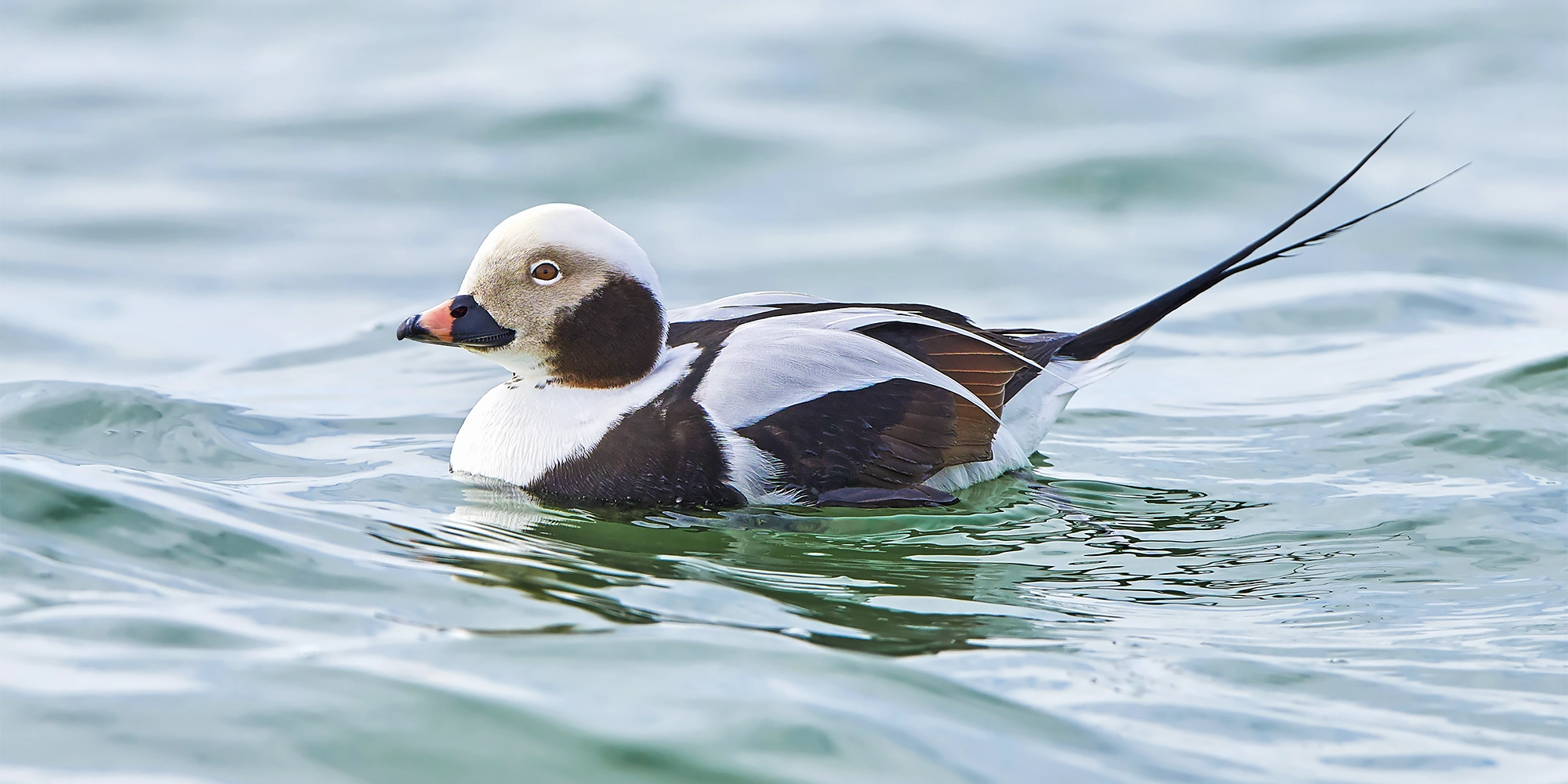
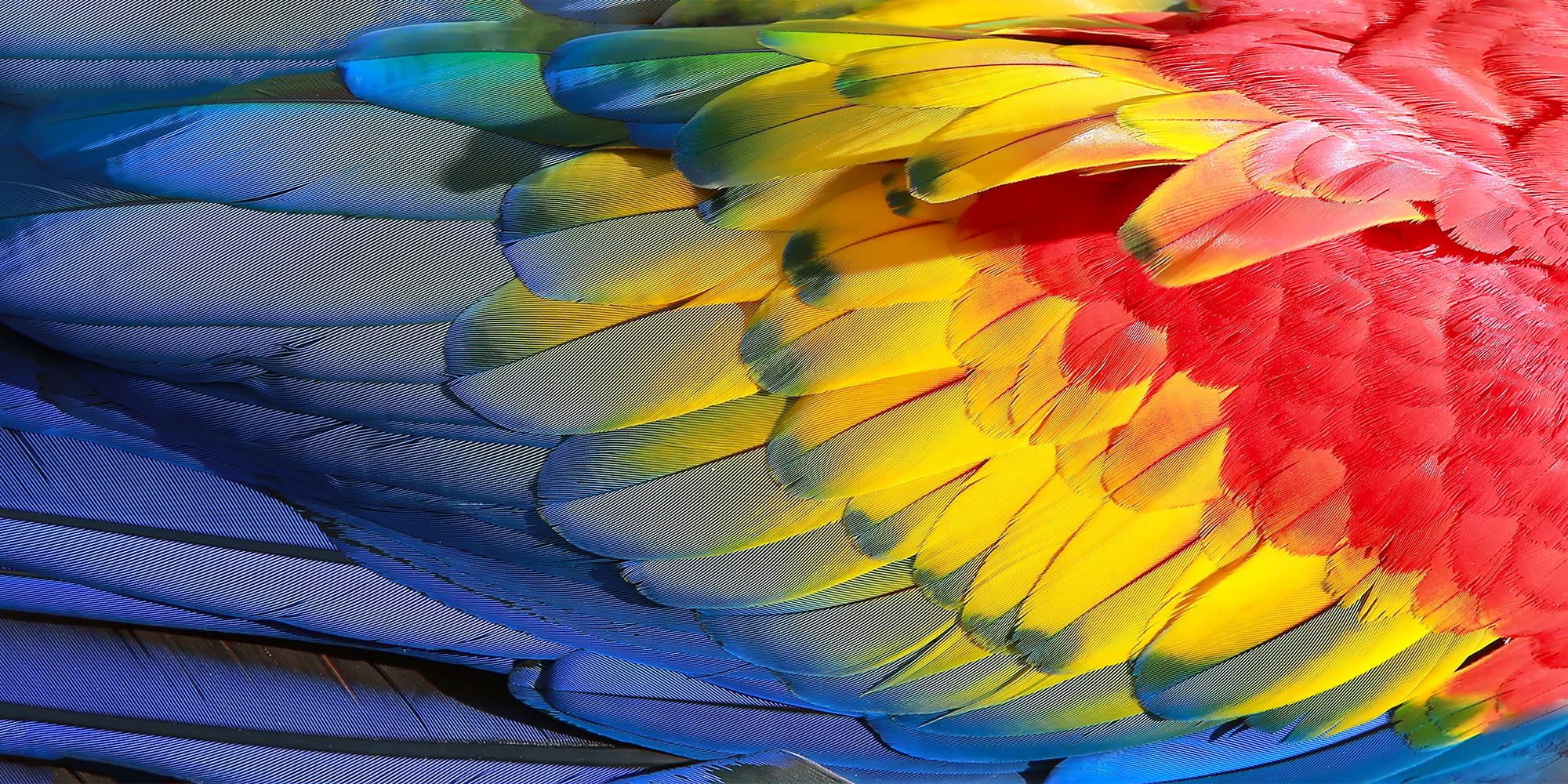
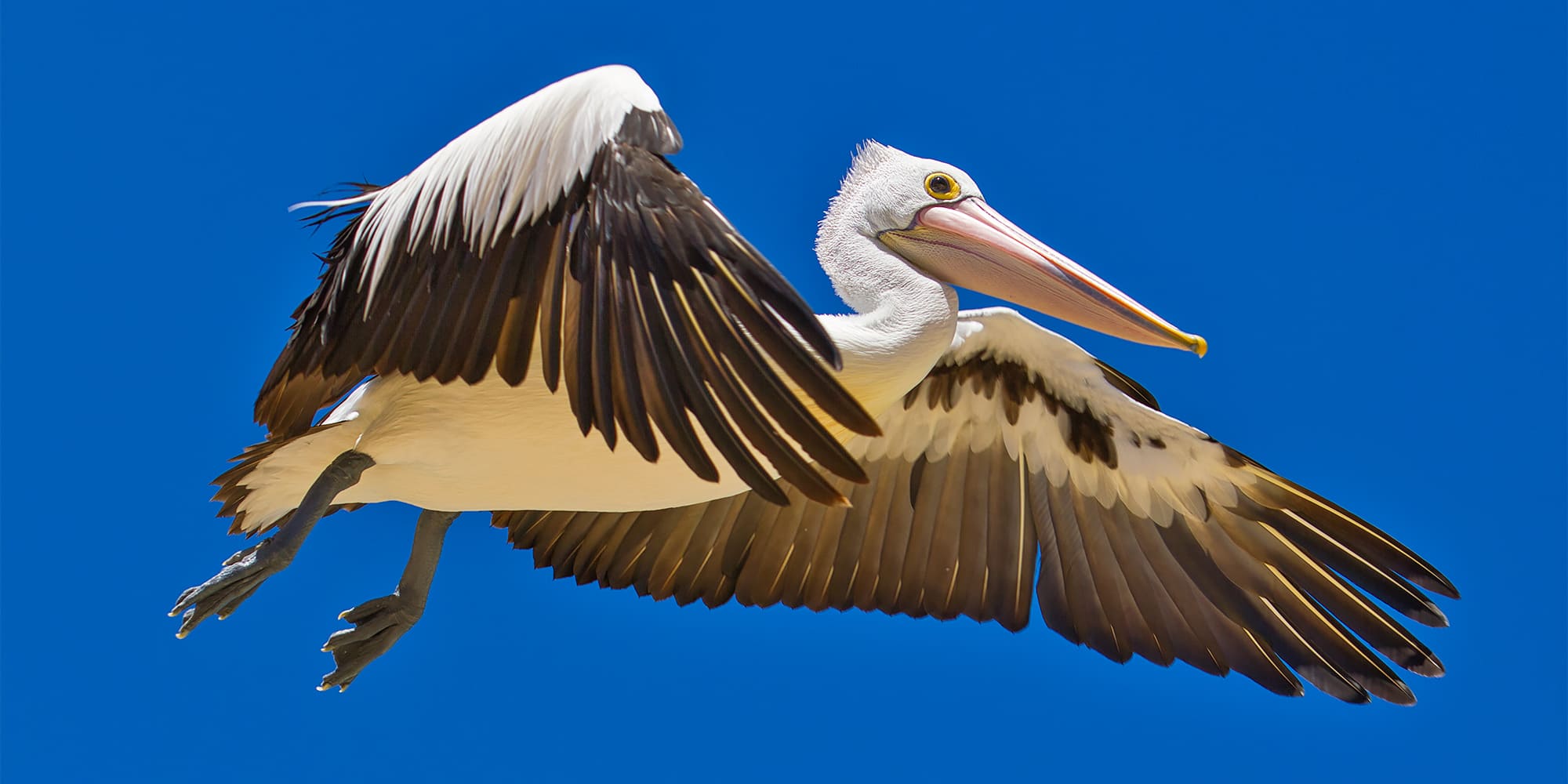
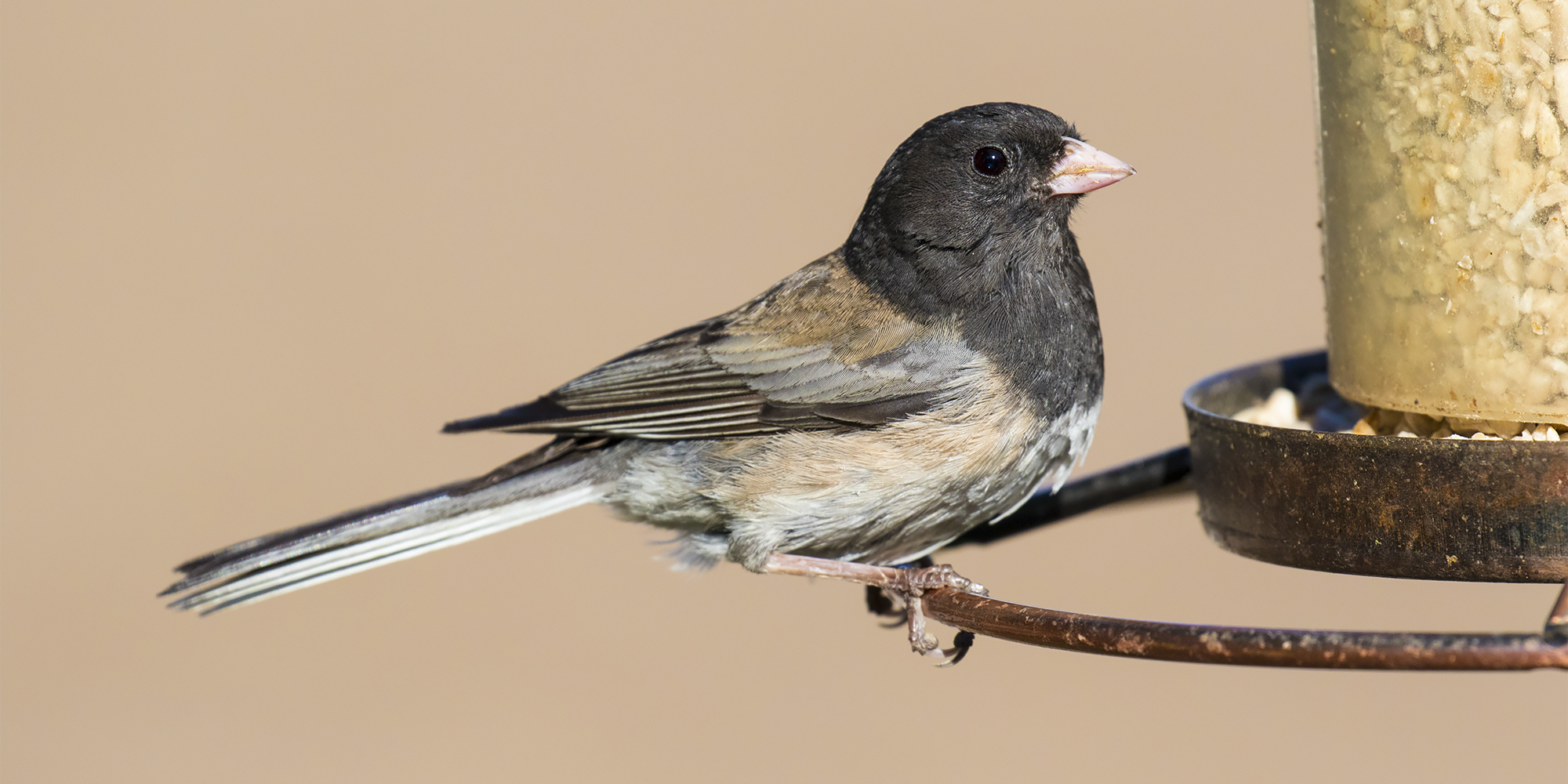

Post Comment